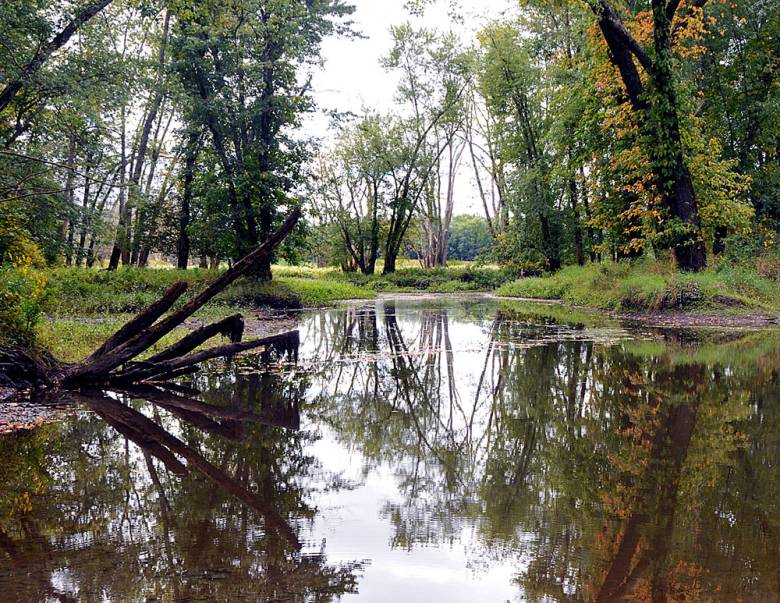16
Feb
Intersex Fish at National Wildlife Refuges Considered for Further Study
(Beyond Pesticides, February 16, 2016) Last Thursday, officials reported that federal scientists for the U.S. Fish and Wildlife Service (FWS) are recommending follow up studies for a portion of the Wallkill River in Sussex County, NJ, in addition to five other national wildlife refuges in the Northeast that were previously found to contain small-mouth bass with intersex characteristics. A study conducted by FWS and the U.S. Geological Survey (USGS) points out that smallmouth and largemouth bass are showing intersex features, but researchers have not pinpointed the cause. Scientists hope a follow up study will provide answers.
 Intersex fish and other species are characterized by one sex exhibiting traits of the opposite sex. In the case of the FWS/USGS study, researchers found testicular oocytes ””female eggs found inside male testicles””in male smallmouth and largemouth bass. The source of intersex effects can be hard to pinpoint, but pesticides are often cited as a cause given that they widely pollute waterways that fish populate. Those chemicals have properties that disrupt the endocrine system and affect the reproductive system, causing development issues such as testicular oocytes. According to the USGS press release for the study, “Estrogenic endocrine-disrupting chemicals are derived from a variety of sources, from natural estrogens to synthetic pharmaceuticals and agrochemicals that enter the waterways. Examples include some types of birth control pills, natural sex hormones in livestock manures, herbicides and pesticides.”
Intersex fish and other species are characterized by one sex exhibiting traits of the opposite sex. In the case of the FWS/USGS study, researchers found testicular oocytes ””female eggs found inside male testicles””in male smallmouth and largemouth bass. The source of intersex effects can be hard to pinpoint, but pesticides are often cited as a cause given that they widely pollute waterways that fish populate. Those chemicals have properties that disrupt the endocrine system and affect the reproductive system, causing development issues such as testicular oocytes. According to the USGS press release for the study, “Estrogenic endocrine-disrupting chemicals are derived from a variety of sources, from natural estrogens to synthetic pharmaceuticals and agrochemicals that enter the waterways. Examples include some types of birth control pills, natural sex hormones in livestock manures, herbicides and pesticides.”
In statements to Scott Fallon, a writer for The Record, Fred Pinkney, Ph.D., a FWS contaminants biologist who coauthored the first study, said, “A follow-up study would include more fish samples and also tests for chemicals in the water for 30 to 60 days.” Leadership at FWS and USGS still has to sign off on additional research. Funding has not yet been earmarked for a follow-up study.
Advocates for the Wallkill River were pleased that that the agency is looking at further studies. “What we’d like to find out is a short list of compounds that are causing these changes in the fish,” stated Dan Shapely, Hudson River Riverkeeper who monitors water quality in the Wallkill, a tributary of the Hudson River.
Fish and other aquatic organisms face numerous risks from pesticide exposures, even at low levels. In fact, USGS scientists identified pesticides as one of the contaminants in the Potomac River linked to intersex fish observed there. Atrazine, one of the most commonly used herbicides in the world, has been shown to affect reproduction of fish at concentrations below U.S. Environmental Protection Agency’s (EPA) water-quality guidelines. Concentrations of atrazine commonly found in agricultural streams and rivers have been associated with a reduction in reproduction and spawning, as well as tissue abnormalities.
In fish and humans, endocrine disrupting effects include direct effects on traditional endocrine glands, their hormones and receptors, such as estrogens, anti-androgens, and thyroid hormones, as well as signaling cascades that affect many of the body’s systems, including reproductive function and fetal development, the nervous system and behavior, the immune and metabolic systems, the liver, bones and many other organs, glands and tissues. Hundreds of scientific articles have been published across the globe demonstrating a broad selection of chemicals that interfere with the normal development at all ranges of exposure. Scientists discovered effects for some widely used chemicals at concentrations thousands of times less than federal “safe” levels of exposure derived through traditional toxicological tests. Whatever the exposure level, neither fish nor humans are protected from most endocrine-disrupting chemicals present in waterways.
Beyond Pesticides continues to fight to prevent water pollution and harmful agricultural practices. Visit the Threatened Waters page and learn how organic land management practices contribute to healthy waters in the article, “Organic Land Management and the Protection of Water Quality.”
Source: northjersey.com; The Record
All unattributed positions and opinions in this piece are those of Beyond Pesticides.










